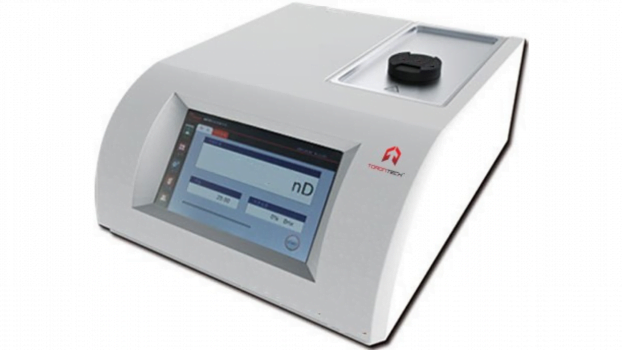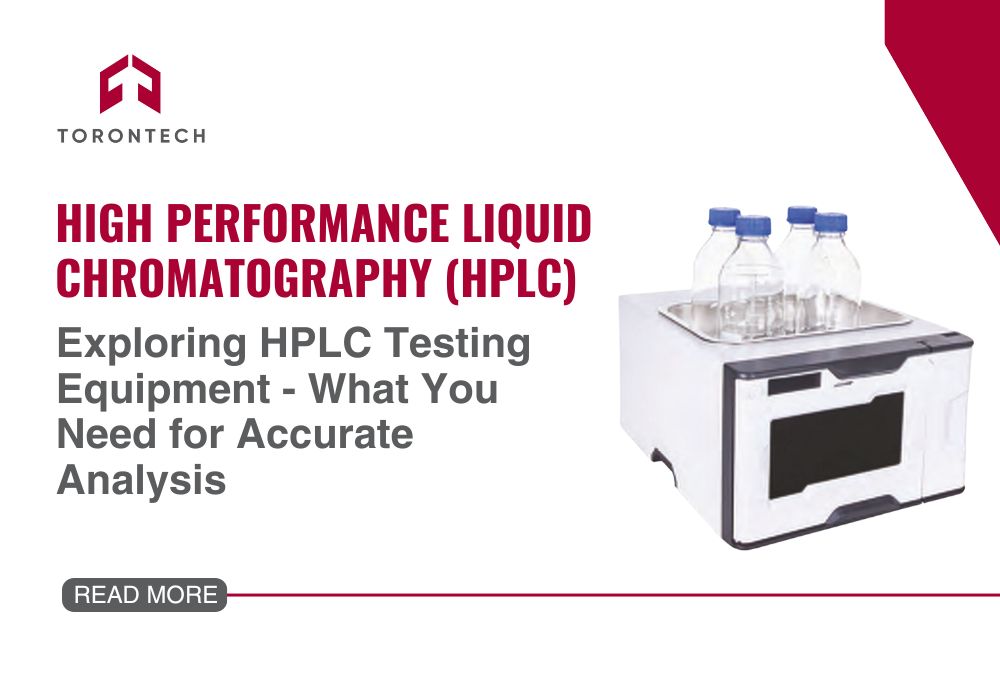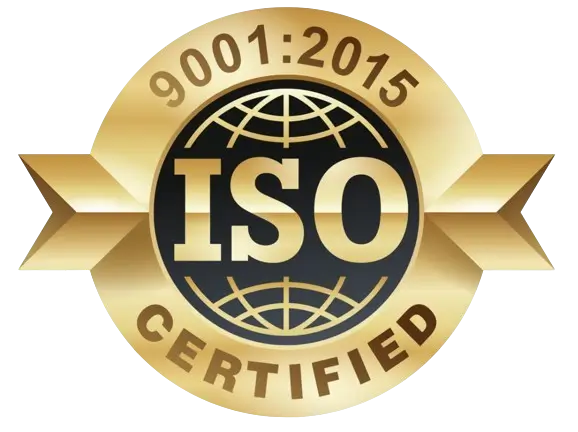When comparing preparative ultracentrifugation and analytical ultracentrifugation, it’s important to recognize their distinct purposes and applications in the lab. Preparative ultracentrifuges are designed to isolate or pellet various biological particles, including viruses, organelles, membranes, and biomolecules such as DNA, RNA, and lipoproteins. These ultracentrifuges are vital for efficiently separating and purifying large volumes of biological samples.
In contrast, analytical ultracentrifuges are equipped with advanced detection systems that allow real-time monitoring of spinning samples. This capability is crucial for determining the sedimentation velocity and equilibrium, which are used to assess the shape, mass, and interactions of macromolecules. Understanding what is analytical ultracentrifugation involves grasping these sophisticated analytical processes that provide detailed insights into the molecular characteristics of your samples.
As you explore the preparative ultracentrifugation definition and the analytical ultracentrifugation principle, you’ll find that while both techniques share similarities in their foundational technology, they cater to different research needs. This article will delve into the principles, key differences, and specific applications of these two types of ultracentrifuges, helping you make an informed decision for your lab’s requirements.
Overview of Preparative Ultracentrifuges
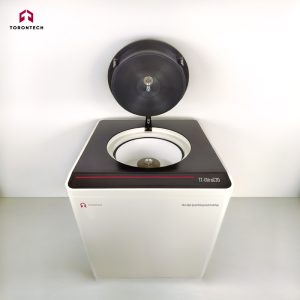
Preparative ultracentrifugation is crucial for separating tissues, cells, subcellular components, and other biochemically interesting particles. You can use these ultracentrifuges to isolate and pellet specific parts of your biological samples, such as DNA, RNA, and organelles, preparing them for further analysis.
These ultracentrifuges operate at high speeds, generating strong centrifugal forces that separate particles based on size, shape, and density. The most common application of preparative ultracentrifugation is in tissue and subcellular fractionation.
This method allows you to isolate increasingly smaller components from complex biological samples. Understanding the preparative ultracentrifugation diagram helps you visualize this process, ensuring you select the correct parameters for your specific needs.
One significant advantage is the ability to process large sample volumes, making it ideal for tasks requiring concentrated pellets of specific particles. For instance, lipoprotein preparative ultracentrifugation is often used to isolate lipoproteins for cardiovascular studies.
Choosing the right rotor is critical for achieving optimal results. Whether you select a fixed-angle or swinging-bucket rotor, understanding the appropriate preparative ultracentrifugation method will help refine your separations and enhance your research outcomes.
Mastering preparative ultracentrifugation provides consistent and reliable separations. It’s a technique that supports a wide range of applications, ensuring your biological samples are ready for detailed analysis. Curious about how this can improve your lab work? Explore the potential of preparative ultracentrifuges to elevate your research.
Overview of Analytical Ultracentrifuges
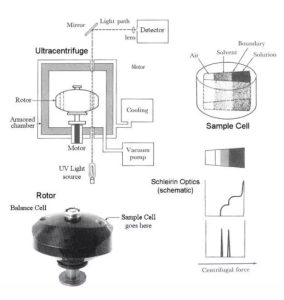
Analytical ultracentrifugation is a sophisticated technique that allows you to analyze macromolecules in real-time. Unlike preparative ultracentrifuges, which focus on isolating and pelleting particles, analytical ultracentrifuges are designed to provide detailed insights into the properties of particles while they are spinning. This process is crucial for determining sedimentation velocity and equilibrium, which reveal the shape, mass, and interactions of macromolecules like proteins and nucleic acids.
One of the main features of analytical ultracentrifuges is the use of detection systems that monitor samples during centrifugation. These systems often include optical devices, such as UV-visible or interference optics, that measure how particles behave under centrifugal force. This real-time data is essential for understanding the sedimentation behavior of particles, leading to accurate determination of their molecular weight, distribution, and interactions.
The analytical ultracentrifugation principle relies on these detection systems to produce precise measurements. For instance, in analytical ultracentrifugation protein studies, you can monitor how proteins sediment, allowing you to assess their purity, aggregation states, and complex formation. This method is highly valuable in structural biology and biophysics, where understanding protein behavior is key.
Moreover, analytical ultracentrifugation supports a range of protocols tailored to specific research needs. Whether you’re following a standard analytical ultracentrifugation protocol or developing a custom analytical ultracentrifugation method, these ultracentrifuges offer the flexibility required for advanced research. The ability to adjust parameters such as rotor speed, sample concentration, and detection method makes them versatile tools in any lab focused on molecular characterization.
In addition to studying proteins, analytical ultracentrifugation is used for investigating other macromolecules, including nucleic acids, lipids, and even small viruses. This versatility makes analytical ultracentrifuges indispensable for comprehensive analytical ultracentrifugation analysis across various fields, from biochemistry to virology.
Mastering the basic principles of analytical ultracentrifugation will enable you to harness its full potential. Whether you’re looking to determine molecular weights or study interactions between particles, analytical ultracentrifuges provide the precision and insight needed for cutting-edge research.
Key Distinctions Between Preparative and Analytical Ultracentrifuges
When comparing preparative ultracentrifuges and analytical ultracentrifuges, you’ll notice that each serves distinct functions in the lab. While both are vital tools for separating and analyzing biological particles, their roles and capabilities differ significantly.
1. Function and Purpose
- Preparative ultracentrifuges focus on isolating and pelleting biological particles like cells, organelles, and DNA. They excel in separating these components from larger samples, preparing them for further study.
- Analytical ultracentrifuges are designed for real-time analysis. They monitor the behavior of particles during centrifugation, providing insights into their size, shape, and interactions.
2. Sample Volume and Speed
- Preparative ultracentrifuges handle large sample volumes efficiently, making them ideal for processing bulk materials. Their high-speed operation ensures effective separation of particles based on density.
- Analytical ultracentrifuges are used with smaller sample volumes where precision is paramount. The focus here is on the accuracy of data, rather than the amount of material processed.
3. Detection Capabilities
- Preparative ultracentrifuges do not include real-time detection systems. Their primary function is the physical separation of particles for collection.
- Analytical ultracentrifuges incorporate advanced optical systems. These systems enable you to observe sedimentation as it happens, allowing for detailed analysis of macromolecules and their properties.
4. Applications and Use Cases
- Preparative ultracentrifugation is commonly used for tasks like tissue fractionation and isolating subcellular components. It’s especially useful when you need to prepare materials for subsequent experimental procedures.
- Analytical ultracentrifugation is ideal for characterizing macromolecules such as proteins and nucleic acids. It’s widely used in research settings where understanding molecular interactions and properties is critical.
Understanding these distinctions will help you choose the right type of ultracentrifuge for your specific research needs. Whether you require the bulk processing capabilities of a preparative ultracentrifuge or the detailed analytical power of an analytical ultracentrifuge, selecting the appropriate tool is key to achieving the best results in your lab.
Advantages and Disadvantages of Preparative and Analytical Ultracentrifuges
Understanding the advantages and disadvantages of preparative ultracentrifuges and analytical ultracentrifuges helps you make informed decisions based on your lab’s needs. Both types of ultracentrifuges offer unique benefits, but they also come with certain limitations that are important to consider.
1. Advantages of Preparative Ultracentrifuges
- High Capacity: Preparative ultracentrifuges are designed to process large volumes of samples efficiently. This makes them ideal for applications requiring the isolation of large quantities of biological material, such as cells, organelles, and nucleic acids.
- Versatility: These ultracentrifuges can handle a wide range of sample types, making them suitable for various tasks, including tissue fractionation and virus isolation.
- Cost-Effective: Compared to analytical models, preparative ultracentrifuges are generally more affordable, especially for labs focused on bulk preparation rather than detailed analysis.
2. Disadvantages of Preparative Ultracentrifuges
- Limited Analytical Capability: Preparative ultracentrifuges lack real-time detection systems, so they cannot provide data on particle behavior during centrifugation. This makes them less suitable for studies requiring precise molecular characterization.
- Less Precision: While they are effective for separating large components, preparative ultracentrifuges are not designed for the high precision needed in analytical applications.
3. Advantages of Analytical Ultracentrifuges
- Real-Time Analysis: Analytical ultracentrifuges offer real-time monitoring of sedimentation, allowing you to gather detailed data on the size, shape, and mass of macromolecules. This capability is particularly valuable in research focused on protein interactions and molecular structure.
- High Precision: These ultracentrifuges provide precise measurements, making them essential tools in fields such as structural biology and biophysics, where understanding molecular behavior is crucial.
- Detailed Data Collection: Analytical models can determine sedimentation velocity and equilibrium, providing comprehensive insights into molecular properties.
4. Disadvantages of Analytical Ultracentrifuges
- Lower Capacity: Analytical ultracentrifuges are typically used with smaller sample volumes. If your work requires processing large quantities of material, these models may not be the best choice.
- Higher Cost: The advanced technology and real-time monitoring systems in analytical ultracentrifuges make them more expensive. This could be a significant consideration for labs with budget constraints.
- Complex Operation: Operating analytical ultracentrifuges often requires specialized training, which may not be ideal for all lab environments.
Understanding these advantages and disadvantages allows you to choose the right tool for your specific applications, ensuring that your lab operates efficiently and effectively, whether for preparative or analytical purposes.
Choosing between these two types of ultracentrifuges depends on your specific research needs. If your goal is to prepare large volumes of biological materials, a preparative ultracentrifuge is likely the better choice. For in-depth molecular analysis, however, the detailed capabilities of an analytical ultracentrifuge will better serve your lab’s objectives.
If your lab focuses on bulk sample preparation, preparative ultracentrifuges provide the capacity and efficiency you need. However, if detailed molecular analysis is your goal, the precision and real-time data offered by analytical ultracentrifuges are unmatched.
Consider your research objectives, budget, and the type of data you require when making your decision. Balancing these factors will help you select the ultracentrifuge that best fits your laboratory’s needs.


